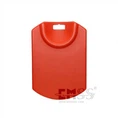The Science Behind Safety Belts: What You Need to Know
Safety belts are one of the most important safety features in your car. They are designed to keep you in your seat and prevent you from being thrown forward or out of the car in the event of a crash.
First, let's take a look at how safety belts work. When you're wearing a safety belt, the belt will stretch slightly when you're in a crash.
This stretch helps to absorb some of the force of the impact, which can help to reduce the amount of force that is transferred to your body.
The safety belt also helps to distribute the force of the impact across your body. Instead of all of the force being focused on one area of your body, the safety belt helps to spread it across your chest, pelvis, and shoulders. This can help to reduce the risk of injury to these areas.
Another important aspect of safety belts is their ability to keep you in your seat during a crash. If you're not wearing a safety belt, you can be thrown forward or out of the car in the event of a crash. This can cause serious injuries or even death. The safety belt helps to keep you in your seat so that you're less likely to be injured.
Now that we know how safety belts work, let's take a closer look at their effectiveness. According to the National Highway Traffic Safety Administration, safety belts have been shown to reduce the risk of fatal injury to front-seat passenger car occupants by 45 percent and the risk of moderate-to-critical injury by 50 percent.
In addition to their effectiveness, safety belts are also required by law in most states. This means that you can be ticketed if you're caught driving without wearing a safety belt.
So, what do you need to know about safety belts to ensure that you're using them correctly? First and foremost, you need to wear your safety belt every time you're in the car. Even for short trips, it's important to wear your safety belt. You never know when a crash might occur, and wearing your safety belt can help to protect you.
It's also important to make sure that your safety belt is properly adjusted. The lap belt should fit snugly across your hips and the shoulder belt should fit snugly across your chest and shoulder. The safety belt should not be twisted and should fit comfortably.
Finally, it's important to replace your safety belt if it's been in a crash. Even if the safety belt appears to be undamaged, it may not be as effective in a future crash. It's better to be safe than sorry, so make sure to replace your safety belt if you've been in a crash.





